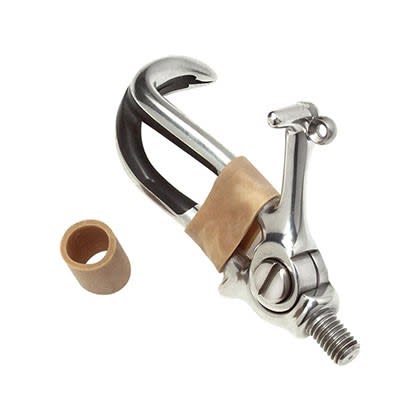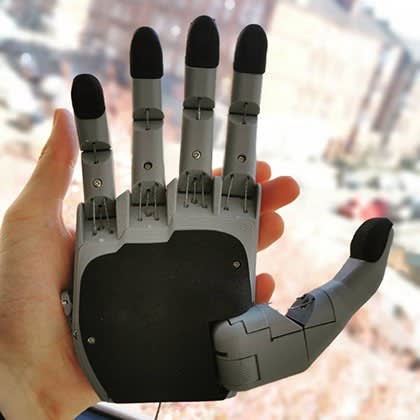Metacarpal - Mechanical Prosthetic Hand Design
Follow articleHow do you feel about this article? Help us to provide better content for you.
Thank you! Your feedback has been received.
There was a problem submitting your feedback, please try again later.
What do you think of this article?
For the last 30 years, upper-limb prosthetics have been hell-bent on developing bionic hands. The results from this have been pretty unsatisfactory as they are still competing with primitive body-powered devices. This is due to a plethora of inherent technical issues with their technology that 30 years of development is yet to solve. Though primitive-looking, body-powered devices or split-hooks actually offer substantial benefits over their electronic counterparts. Most important to amputees is that they offer greater function, proven in tests and competitive events, and weigh substantially less so the wear time can be much greater, not to mention the far lower price. This is why the most popular device today is the split hook, a product invented the same year the Titanic sank! (1912).
Split hook device
Their main issue is their primitive cosmetics, the precise opposite problem of the bionic hands. Enter Metacarpal. Metacarpal is a new Scottish startup aimed at developing body-powered technology that users know and love with cosmetics of bionic hands that successfully boost the confidence of wearers.
If at this point you are thinking, isn't that just the same as E-nable then? You aren't entirely wrong. For those who don't know, E-nable is an open-sourced project that has developed and downloadable, printable and easily assemblable mechanical hand, similar to the idea that I have proposed. This is fantastic, particularly for children who will need several hands to grow with them. However, using non-professional components, production and assembly methods, results in a product that is less than ideal regarding efficiency and robustness.
Body-power should not simply be a cheaper option, but a better one, which is what we are developing. Ours is a mechanical hand that makes no compromises ensuring the greatest possible product.
The device works through a shoulder harness. This harness has a cable attached around the back of the user which enters the hand and when pulled closes a fist so that when users move their shoulders and arms this lets them control the hand. This is a very simple principle, but its intuitive functionality and force feedback is what makes it superior functionally to electronic devices.
Our tester Rico using the hand, rather practically, for some soldering.
This is just an intro to our project but we will be sure to post again soon showing some of the features of the device. If you cannot wait any longer, please see our website www.metacarpal.co.uk which has links to our socials where we post regular update videos of the hand in action.


